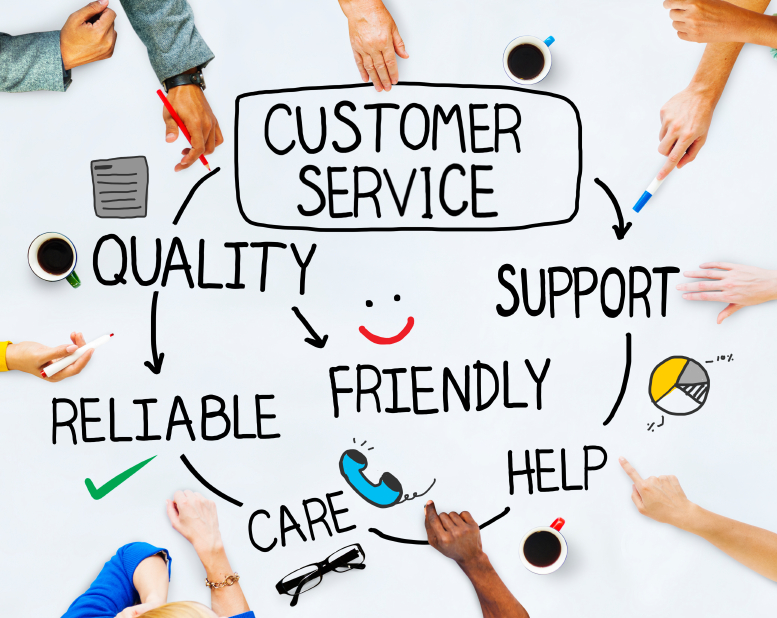If you think government isn’t in the customer experience business, think again. Every American deals with government on a daily basis – whether you know it or not – which is why improving customer service is paramount. But the government still has a long way to go. The Forrester’s Customer Experience Index (CX Index) has concluded that government may have missed a few steps. The overall customer experience plays a key role in determining the success of federal agencies’ customer service.
During an hour-long panel discussion, three experts came together to discuss ways to improve the government customer experience and peer into the future on the DorobekINSIDER Live: Customer Service for Government.
Speakers included:
- Martha Dorris, Former Director of Office of Strategic Programs at the U.S. General Services Administration
- Rick Parrish, Senior Government Customer Experience Analyst at Forrester Research
- Hannah Moss, a Researcher and Writer at GovLoop
So what is good customer service?
Governments need to take a different approach to customer service, because they must focus on the overall customer experience, not just an individual transaction. “By focusing on customer service you are focusing on a single strain of service. It is about the entire journey-making the transaction and following-up with the transaction,” Dorris said. It really cannot and should not be viewed as a regular one-time transaction, because it isn’t. Regular business has people thinking “of customer service as a moment of transaction (private sector refers to this as the point of service). But government has a whole range of engagement with the customer. It is, in essence, an engagement throughout the customer’s life cycle,” Parrish reiterated.
Working on improving the customer’s experience with the federal government does not have to be something we put off tomorrow, because “doing right by customers is good policy for any administration,” Parrish stated.
Plus, good customer service through good customer experiences can have a real impact on peoples’ lives. “They are realizing across agencies and across government that it really will be a win-win when we invest in customer service,” Moss said. She shared the recent story of the formerly unsuccessful National School Lunch Program put on by the U.S. Department of Agriculture’s (USDA) Food and Nutrition Service (FNS). The program is designed to help provide healthy, low-cost or free meals to more than 30 million children in the U.S. and yet, FNS found that there was a flaw in the system: school districts weren’t receiving the appropriate compensation for the meals being distributed. At first, many believed it to be a malfunction in the software program, but after further analysis by USDA and the Office of Personnel Management, they discovered it to be a customer service issue. USDA went out and talked to the staff members in various school districts and found ways to improve the application process overall.
This past May, that new application became available to more than 14,000 school districts, which manage more than 100,000 schools. And FNS officials anticipate reducing improper payments by 10 percent, or $600 million, by the 2019-20 school year. And most importantly, citizens get better, easier access to a necessary service for their kids. (If you wish to read more about this story, please refer to GovLoop’s The Customer Service Playbook for Government.)
And if for some reason you think this is just an example of one program that affected one set of people, you are wrong. Unfortunately, one bad experience can harm the entire government system.
Research proves that bad customer experience does have a direct affect on citizens’ outlook on the government system as whole. Parrish shared that Forrester’s CX Index showed that when federal agencies don’t provide good customer experiences, “it harms the foundation of the political system. There is less trust in our government and less confidence in government.”
So, how can agencies help their employees understand how to move forward in providing better customer experiences overall? Dorris advised looking at starting these improvements in your own workspace. Parrish outlined steps to help an agency make this distinction. First, make a case that outlines what each staff member’s role is in the grand scheme of the customer experience. Then, “map your customer’s journey and the ecosystem will show that everybody has a deep impact on the services they provide to customers. Show them the role they can play,” Parrish highlighted.
Long-term, Dorris shared that the necessary change in government’s culture towards customer service needs to be across the board, not just in one agency.
“We really don’t know how our customers want to interact with government. Agencies do it individually, but as a whole, we don’t have the first-hand data.”
She went on to suggest creating a federal system in which agencies compare services across government. Then, agencies should make their service levels open to the public. These methods would allow agencies to learn from one another and, in turn, could help share best practices.
In the end, Dorris reminded us that govies need to remain diligent and dedicated to bettering customer service through customers’ experiences. Hopefully, you too, will become a customer service enthusiast.






please write me with my personal email ([email protected])i have important thing to discuss with you OK